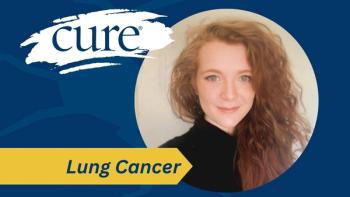
- Cancer Guide 2014
- Volume 0
- Issue 0
At Diagnosis: Balancing Cancer & Work
Choosing to work through treatment requires planning ahead
Many patients worry about job security and push themselves to work through cancer-related pain and fatigue. But balancing cancer and work is possible with a proactive plan, accommodating employers and medical advances that include less toxic treatments and medication to alleviate side effects. With almost half of all cancer patients receiving their diagnosis under the age of 65, about 60 percent will continue to work. Of those who do stop work during treatment, up to 80 percent may return to the workforce.
How to Make It Work
Cancer stereotypes have changed dramatically, but patients, as well as employers, may still have assumptions about how a diagnosis will or will not affect work. Experts recommend having a plan in place before discussing a cancer diagnosis at work. Patients should:
> Enter into the conversation with supervisors and coworkers with as much knowledge as possible and not be afraid to suggest what would work best for them during treatment.
> Develop a communication strategy with supervisors and co-workers that includes goals, a treatment schedule, possible side effects, delegation of job duties and who to tell about the diagnosis.
> Explore the company’s policy on sick leave, telecommuting and flex time.
> Talk with the medical team about what would make treatment easier, such as medication taken orally and to alleviate side effects.
> Explain that the situation may change depending on how treatment goes and how it affects work performance in the long run. Be up front about what can and cannot be expected and don’t be afraid to ask for help.
> Ask to decrease the workload, work from home or take time off from the job because of treatment schedules or side effects, such as fatigue or nausea. Receiving chemotherapy late in the week can provide a weekend to recover.
Know the Law
The rate of job discrimination against cancer patients and survivors has decreased, partly because of protections from the Americans with Disabilities Act (ADA) of 1990 and other antidiscrimination laws that keep survivors from being treated unfairly in the workplace.
Discrimination that does occur is often a result of misconceptions regarding cancer and a patient’s ability to work. A small portion of cases filed with the ADA are by cancer patients and survivors. If patients are discriminated against, experts recommend legal action as a last resort. Instead, they should familiarize themselves with their company’s policies and talk with the human resources department about their issues and possible solutions. Often, information from social workers or the medical team and support from coworkers can diffuse a situation. If legal action is the only alternative, they should keep written records of all actions and communications.
Although patients have the right to keep their diagnosis confidential, it is recommended they disclose their cancer history in case it affects their job performance and they want their employer to provide accommodations under the ADA. Patients who work for companies with at least 15 employees must be reasonably accommodated, which can include a change in job duties or flex time.
The Family and Medical Leave Act (FMLA) also protects jobs at companies with 50 or more employees for up to 12 weeks of unpaid leave, and guarantees the continuation of benefits and health insurance.
Caregivers can also take advantage of the FMLA. To qualify, they must have worked more than 1,250 hours for more than one year and intend to return to the job when their leave is over.
Articles in this issue
over 12 years ago
During Treatment: Getting Proper Nutritionover 12 years ago
During Treatment: Dealing With Side Effectsover 12 years ago
Before Treatment: Handling Insurance Mattersover 12 years ago
Before Treatment: Understanding Clinical Trialsover 12 years ago
Caregiving: Practicing Self-Careover 12 years ago
After Treatment: Developing a Survivorship Care Planover 12 years ago
During Treatment: Staying Activeover 12 years ago
Before Treatment: Preparing for Long-Term & Late Effectsover 12 years ago
Before Treatment: Seeking a Second Opinionover 12 years ago
Caregiving: Taking on a New Role



